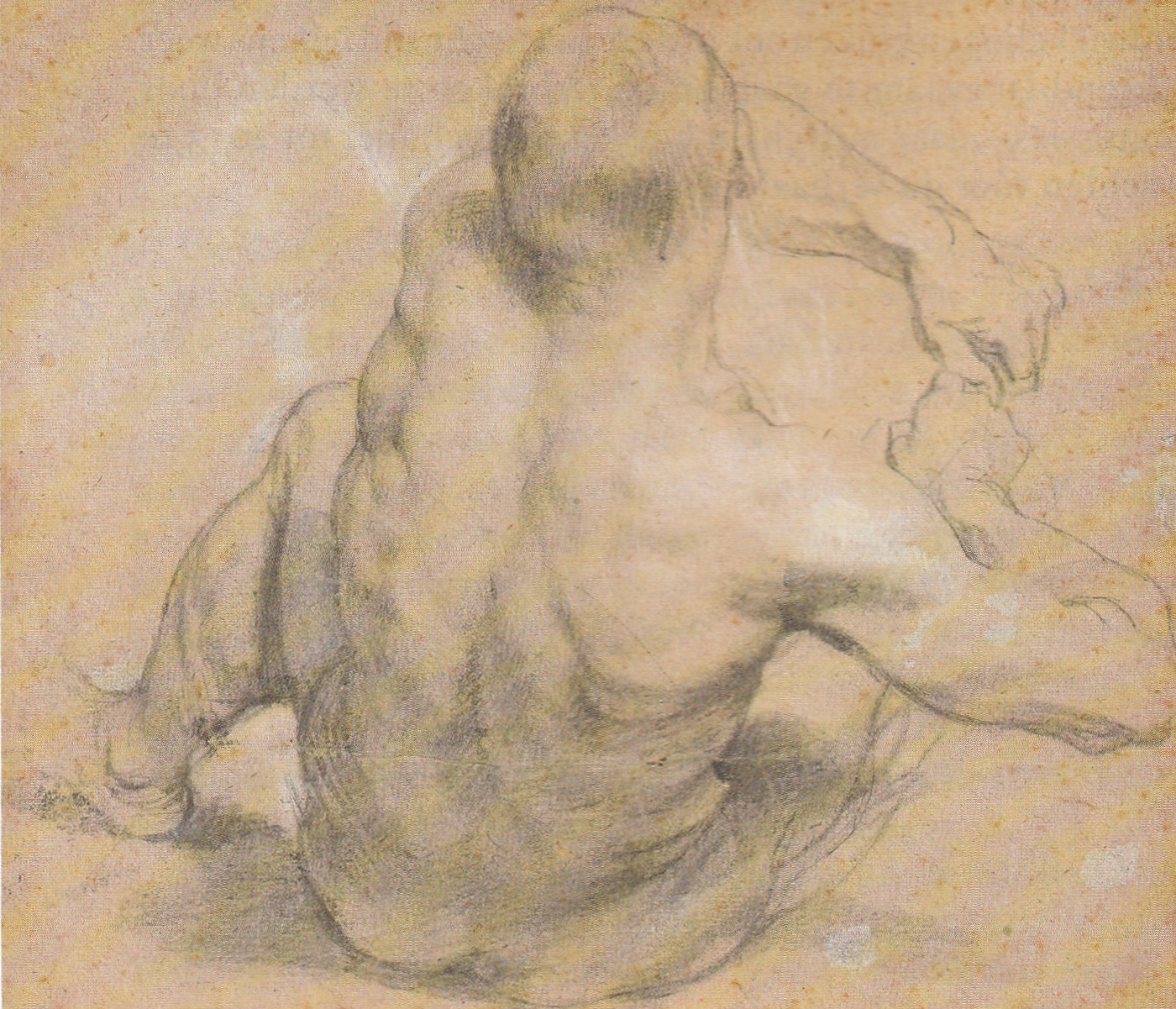Cha[pter 5 | EVALUATING A MASTERPIECE
The Boymans van Beuningen Museum in Rotterdam owns a drawing by Anthony van Dyck depicting a seated nude man, seen from behind and above, apparently engaged in something requiring some effort. The chalk drawing, highlighted in white, is a study for a painting in St. Martin’s Church in Zaventem. It is a study of a lavender-colored nude model.

The quality of this drawing is demonstrable: it offers not only an anatomically and perspectively sound, but also a convincing representation of the human body in action. Contours, hatching, light and dark make the plasticity of the body and the position of the various body parts in space tangible throughout. Rich in detail, the drawing remains clear. Carefully dosed, the varying gradations of light and dark provide extensive information about the anatomy without it ever disintegrating into a restless interplay of spots.[…] In short, a work that, as they say, betrays a master’s hand: eloquent delivery, controlled richness, accuracy supported by thorough practice in the transcription of spatial reality on a sheet of paper – the technique of drawing. Quality to be envied – in a preliminary study that, around 1620, did not even pretend to be an inspired masterpiece. (From the book “On the Assessment of Works of Visual Art” Cor Blok, 1992)